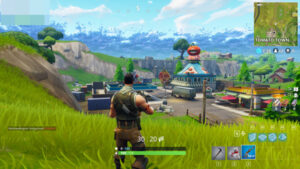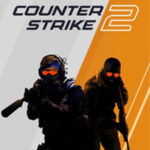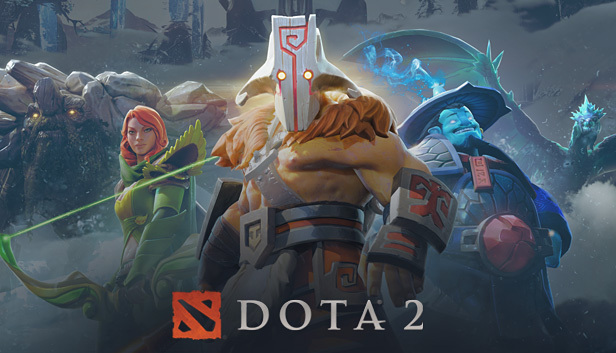Advertisement
Popular Now
Fortnite, a cultural phenomenon that has captivated millions worldwide, continues to evolve with each passing season. From its humble beginnings as a quirky battle royale to a sprawling metaverse of creative expression, one truth remains constant: to secure that coveted Victory Royale, you need skill, strategy, and an ever-adapting mindset. This comprehensive guide, "Master the Arena: Your Ultimate Fortnite Tips & Guides Compendium," is meticulously crafted to elevate your gameplay, whether you're a fresh recruit dropping for the first time or a seasoned veteran looking to refine your edge. We'll delve into the foundational principles, advanced tactics, and mental fortitude required to consistently outperform your opponents and dominate the ever-changing landscape of Fortnite. Prepare to transform your gameplay and claim your rightful place at the top.






Landing Smart: The First Step to Victory
Your landing spot dictates the pace and success of your early game. A strategic drop can set you up for a smooth loot phase, early eliminations, or a quick exit. Don't just blindly parachute; analyze the bus path and the terrain below. The initial moments after leaping from the Battle Bus are critical. Aim for locations that balance good loot with manageable early-game engagements. Hot drops like Tilted Towers or Retail Row offer high-tier loot and intense action, perfect for aggressive players seeking early eliminations and a fast-paced start. However, they also carry a high risk of immediate elimination. Conversely, quieter, more isolated spots might yield less spectacular loot but offer a safer environment to gather resources and prepare for later skirmishes. Consider the current season's map changes and new points of interest (POIs) as they often contain unique loot or environmental advantages.Choosing Your Drop Zone
- Hot Drops (High Risk, High Reward):
- Advantages: Abundant high-tier loot, frequent early engagements, quick progression of skills.
- Disadvantages: High likelihood of early elimination, intense competition for resources.
- Ideal for: Aggressive players, those comfortable with close-quarters combat, or practicing high-pressure scenarios.
- Medium Drops (Balanced Approach):
- Advantages: Decent loot opportunities, moderate early engagements, good balance of risk and reward.
- Disadvantages: May still encounter early fights, less guaranteed high-tier loot than hot drops.
- Ideal for: Players seeking a steady start, those looking to engage without being overwhelmed.
- Cold Drops (Low Risk, Low Reward):
- Advantages: Minimal early engagements, ample time to loot and gather materials, safer start.
- Disadvantages: Limited high-tier loot, often requires more travel to reach the action.
- Ideal for: Newer players, those focusing on survival, or players who prefer a slower, more methodical approach.
Mastering Your Descent
Once you've chosen your general area, fine-tune your descent. Deploy your glider strategically to cover more ground or to land precisely on a specific building or chest spawn. Look for open doors, broken walls, or shimmering lights that indicate potential loot. Prioritize weapons and shields immediately upon landing. Even a common pistol is better than no weapon at all when an enemy is nearby. Remember that momentum can carry you further, so practice diving straight down and then leveling out to glide into your target.Efficient Looting & Inventory Management
Looting efficiently isn't just about grabbing everything; it's about prioritizing, understanding weapon rarities, and maintaining a balanced inventory for all stages of the game. A cluttered inventory can lead to fumbling in critical moments, while a well-organized one provides a clear advantage. As soon as your boots hit the ground, the race for resources begins. Focus on securing a weapon, shield, and some healing items. Green and blue rarity weapons are generally sufficient for early engagements. Don't spend too much time meticulously searching every corner of a building if you hear footsteps nearby; secure what you need to defend yourself first. Remember that sound cues are paramount in Fortnite, and extended looting can leave you vulnerable.Weapon Prioritization and Loadout
Your ideal loadout will depend on your playstyle, but generally, a balanced approach is best. Aim for a combination that covers different engagement ranges.- Assault Rifle (AR): Your primary medium to long-range weapon. Essential for sustained fire and damaging builds. Prioritize higher rarity ARs for better accuracy and damage.
- Shotgun: Crucial for close-quarters combat. Pump Shotguns offer high burst damage, while Tactical Shotguns provide a faster fire rate. Practice quick edits and shotgun shots for maximum effectiveness.
- SMG/Pistol: Good for quickly finishing off downed opponents or spraying down builds. SMGs are excellent for close-quarters engagements after a shotgun shot.
- Sniper Rifle/Explosives: Situational but powerful. Sniper rifles are excellent for long-range eliminations, while explosives (rocket launchers, grenade launchers) can be devastating for breaking down builds and dislodging entrenched enemies.
- Healing Items: Always carry a mix of small and large shields, and at least one type of health recovery item (medkits, bandages, slurp juice). Shield Potions and Slurp Juices are generally superior due to their faster application time and ability to restore both health and shield.
Backpack Organization
A clean inventory allows for quick weapon swaps and healing during intense firefights. Develop a consistent slot arrangement. For example, many players keep their shotgun in the first slot, AR in the second, SMG in the third, and then healing items and utility in the remaining slots. Avoid hoarding unnecessary items or multiple variations of the same weapon type if a superior rarity is available. Constantly evaluate your inventory as you collect more loot, dropping lower-tier items for higher-tier ones.Resource Gathering & Building Fundamentals
Building is the core mechanic that truly sets Fortnite apart. Understanding how to gather materials efficiently and utilize them effectively in combat is non-negotiable for success. Wood, brick, and metal each have unique properties that influence their tactical application. The moment you have basic weaponry and some shield, start gathering materials. Trees provide wood quickly, rocks give brick, and metal is found in cars and structures. Prioritize wood early on for quick defensive structures, then transition to brick and metal as you gather more. Remember, every swing of your pickaxe matters, and understanding when and where to farm is crucial. Be mindful of your surroundings while farming, as the sound can alert nearby enemies.Material Management
- Wood: Builds fastest, has the least health. Ideal for immediate defense, quick ramps, and pushing enemies.
- Brick: Builds at a moderate speed, has medium health. A good all-around material for general construction and defensive walls.
- Metal: Builds slowest, has the most health. Best for fortified positions, late-game bases, and structures that need to withstand sustained fire.
Basic Building Techniques
Master these fundamental builds to improve your survivability and offensive capabilities.- Ramp Push: Building a ramp with a wall behind it as you push an enemy uphill. This provides cover and helps you gain height.
- 90s (Ninety Degree Turns): A rapid way to gain height quickly by building walls and ramps in a circular motion. Essential for high-ground control.
- Box Up: Instantly creating a 1x1 box around yourself for quick cover, healing, or resetting a fight.
- Wall Replacement: Shooting down an enemy wall and immediately placing your own to take control of their structure. This is a high-level technique requiring quick reflexes.

Early Game Engagements: Aggression vs. Caution
The early game sets the tone for the rest of your match. Deciding when to push and when to play passively is a crucial skill that comes with experience. Analyzing enemy movements and understanding the flow of early fights can lead to decisive victories. After landing and securing initial loot, you'll inevitably encounter other players. These early engagements are often chaotic and unpredictable. Pay close attention to audio cues – footsteps, gunshots, and harvesting sounds. If you hear a nearby fight, decide whether to third-party (engage from the sidelines), push directly, or avoid the conflict entirely. Your decision should be based on your current loadout, shield status, and understanding of the enemy's likely position.When to Push
- Weakened Opponent: If you see an enemy with low shield or health, or if they're actively engaged in another fight.
- Superior Loadout: You have better weapons and more shield than your opponent.
- Positional Advantage: You have the high ground, better cover, or can surprise them.
- Material Advantage: You have significantly more materials to out-build your opponent.
When to Play Cautious
- Limited Resources: You're low on health, shield, or materials.
- Disadvantageous Position: You're in the open, on low ground, or exposed.
- Uncertainty: You don't know the enemy's exact location, numbers, or loadout.
- Too Many Enemies: You identify multiple enemies in the immediate vicinity.
Mid-Game Rotations & Map Awareness
As the storm closes in, knowing how and when to rotate becomes paramount. Strategic movement across the map allows you to avoid storm damage, find better positions, and potentially ambush unsuspecting enemies. Map awareness is about more than just looking at the mini-map; it's about anticipating enemy movements and understanding the flow of the game. Mid-game is characterized by smaller circles and increased player density. Your goal is to move towards the next safe zone while minimizing exposure to enemy fire and the storm. Always consider the terrain, potential choke points, and available cover. Look for natural high ground and avoid open fields whenever possible. Utilize vehicles for faster rotations, but be mindful that they produce noise and can attract attention.Planning Your Rotations
- Predict the Circle: Over time, you'll develop an intuition for where the next circle might shrink. Try to predict this and move early to secure a favorable position within it.
- Edge of the Storm: Often, moving along the edge of the storm provides a safer rotation path as players are less likely to be behind you.
- High Ground: Always prioritize gaining high ground within the new circle. It offers vision, defensive advantages, and better shooting angles.
- Scout Ahead: Use your eyes and ears to scout for enemies before committing to a rotation path. Listen for gunshots, building, or harvesting sounds.
Utilizing Map Features
- Ziplines & Rifts: Use these for quick and efficient movement across long distances, but be aware that they can make you an easy target.
- Vents & Geysers: Provide quick boosts for gaining height or escaping dangerous situations.
- Vehicles: Quads, cars, and other vehicles offer speed but also make noise, revealing your position. Use them strategically.
- Supply Drops: Marked by blue smoke, these contain high-tier loot but are often contested. Approach with caution.
Advanced Building & Editing
Moving beyond basic structures, mastering advanced building and editing techniques is what separates good players from great ones. Quick edits allow for aggressive plays, defensive maneuvers, and intricate traps. Practice is key to developing muscle memory for these complex actions. The ability to fluidly transition from building to editing and back again is a hallmark of skilled Fortnite players. This involves not only knowing what to build but how to quickly modify it to your advantage. Your edit binds should be comfortable and easily accessible, allowing for rapid execution. Focus on perfecting single-tile edits before moving on to more complex sequences.Essential Edits to Master
- Window Edits: Creating small openings for peeking and shooting while maintaining cover.
- Door Edits: Quickly creating an exit or entry point.
- Arch Edits: Opening up space for movement or line of sight without fully exposing yourself.
- Floor/Cone Edits: Essential for taking opponent's builds, setting up traps, or quickly getting out of a box.
- Ramp Edits: Modifying ramps for specific angles, creating cover, or confusing opponents.
Edit Plays and Combos
- Peak Shots: Editing a small opening, taking a quick shot, and immediately resetting the edit for cover.
- Trap Plays: Editing a wall or floor to bait an enemy into a trap.
- Right-Hand Peeks: Using the third-person camera advantage to expose less of your body when peeking from the right side of cover.
- Edit Courses: Dedicate time in Creative Mode to practicing your edits. There are many community-made edit courses designed to improve your speed and accuracy.

Combat Fundamentals & Aim Improvement
Winning gunfights in Fortnite relies on a combination of mechanical skill, strategic positioning, and understanding weapon mechanics. Improving your aim is a continuous process that requires dedication and smart practice. Beyond building, your ability to hit shots is paramount. Each weapon in Fortnite has unique recoil patterns, bloom (bullet spread), and effective ranges. Understanding these characteristics allows you to choose the right weapon for the situation and maximize your damage output. Practice your aim not just on static targets, but on moving ones, and integrate it with your building and editing.Aiming Drills and Techniques
- Aim Training Maps: Utilize Creative Mode maps specifically designed for aim practice. These often feature various scenarios, from tracking moving targets to flick shots.
- Crosshair Placement: Develop the habit of keeping your crosshair at head level, anticipating where an enemy's head will be.
- Tracking: Continuously adjust your aim to follow a moving target. Essential for AR and SMG engagements.
- Flick Shots: Rapidly moving your crosshair to a target and shooting instantly, often used with shotguns and sniper rifles.
- Warm-up Routine: Before diving into Battle Royale, spend 10-15 minutes in Creative practicing your aim and edits.
Understanding Weapon Mechanics
- Bloom vs. First Shot Accuracy: Most weapons have bloom, meaning bullets can deviate from your crosshair. However, many also have First Shot Accuracy (FSA) when standing still and aiming, making your initial shot more precise.
- Recoil Control: Learn the recoil patterns of your primary weapons and practice compensating for them.
- Damage Drop-off: Weapons deal less damage over longer distances. Choose the appropriate weapon for the range of engagement.
Sound Cues & Awareness
Fortnite is a game where sound is just as important as visuals. Footsteps, gunshots, harvesting, and building sounds provide critical information about enemy locations and intentions. Developing strong audio awareness can give you a significant competitive edge. Invest in a good pair of headphones. Positional audio allows you to pinpoint the direction and approximate distance of enemy actions. Turn off background music in your game settings to better hear crucial sound cues. Actively listen for subtle noises that indicate an enemy's presence, such as the faint sound of a pickaxe hitting a tree in the distance or the unique sound of a specific weapon being fired.Key Sound Cues to Listen For
- Footsteps: Indicates enemy proximity and direction. Different surfaces (wood, concrete, grass) produce distinct sounds.
- Gunshots: Reveals enemy engagements, weapon type, and approximate distance.
- Harvesting Sounds: Signifies an enemy gathering materials, often making them vulnerable.
- Building Sounds: Alerts you to enemy construction, indicating their position and whether they are defensively or aggressively building.
- Chest Spawns: A distinct shimmering sound indicates a nearby chest.
- Supply Drops: The sound of a plane flying overhead and then a balloon inflating indicates a supply drop.
- Glider Redeploy: The sound of a glider deploying indicates an enemy descending from height.
Utilizing Audio Information
- Pinpoint Locations: Use the directional audio to narrow down enemy positions, even through walls or floors.
- Anticipate Pushes: If you hear an enemy building aggressively towards you, prepare for a push.
- Avoid Engagements: If you hear multiple gunfights or a high concentration of enemies, you might choose to rotate away.
- Third-Party Opportunities: Listen for extended gunfights, indicating opportunities to enter a fight and eliminate weakened opponents.
Late Game Strategies & Circle Management
The final circles are where the stakes are highest. Adaptability, calm decision-making, and precise execution are vital. Understanding how to play the shrinking circle, manage resources under pressure, and secure eliminations in tight spaces defines late-game success. As the player count dwindles and the storm accelerates, the game transforms into a high-intensity chess match. Resource management becomes paramount, as does the ability to react instantly to unexpected threats. Avoid unnecessary fights until absolutely necessary, and prioritize securing a favorable position within the upcoming safe zone.Playing the Final Circles
- Material Conservation: Only build when absolutely necessary. Save your materials for crucial defensive structures or offensive pushes.
- High Ground Priority: Constantly aim to secure and maintain the high ground. It offers superior vision, shooting angles, and cover.
- Edge of the Circle: Often, playing the very edge of the safe zone can be advantageous, as it reduces the number of directions enemies can come from.
- Third-Partying: Look for opportunities to engage players already fighting each other, but be wary of becoming the third party yourself.
- Pressure Management: Stay calm under pressure. Panicking leads to mistakes. Focus on one action at a time.
Offensive and Defensive Final Circle Plays
- Aggressive Pushes: If you have a material advantage and good shield, consider pushing a weakened opponent to secure an elimination and their loot.
- Box Fighting: Mastering close-quarters combat within small structures is crucial. Practice taking walls, editing, and shotgun plays.
- Explosive Usage: Rocket launchers and grenade launchers are incredibly powerful in late game for destroying enemy builds and forcing pushes.
- Mobility Items: Utilize Shockwave Grenades, Rift-To-Gos, or other mobility items to escape dangerous situations or quickly reposition.

Mental Fortitude & Learning from Mistakes
Beyond mechanical skill, a winning mindset is crucial. Staying calm under pressure, adapting to unexpected situations, and critically analyzing your mistakes are the hallmarks of a consistently improving player. Every defeat is an opportunity to learn. Fortnite can be frustrating. Getting eliminated early, making a bad play, or losing a close fight can be demoralizing. However, your mental approach to these situations directly impacts your ability to improve. Don't let frustration cloud your judgment. Instead, take a moment to reflect on what went wrong and how you can prevent it from happening again.Cultivating a Winning Mindset
- Stay Calm Under Pressure: In intense situations, take a deep breath. Panicking leads to poor decisions.
- Positive Self-Talk: Avoid negative thoughts. Focus on what you can do, not what you can't.
- Adaptability: The game is constantly changing. Be prepared to adjust your strategies and loadouts.
- Patience: Not every fight needs to be pushed. Sometimes, waiting for the right moment is the best strategy.
- Celebrate Small Victories: Acknowledge your improvements, even minor ones.
Analyzing Your Gameplay
- Replay Mode: Utilize Fortnite's replay mode to review your past games. This is an invaluable tool for identifying mistakes, understanding enemy perspectives, and analyzing your decision-making.
- Focus on Key Moments: Replay your eliminations, close calls, and impactful decisions.
- Ask "Why?": Why did I get eliminated? Why did I push there? Why did I choose that weapon?
- Identify Patterns: Do you consistently make the same mistake? Work on breaking those habits.
- Learn from Pros: Watch professional players and streamers. Observe their decision-making, rotations, and combat strategies. Don't just copy, understand why they do what they do.


















